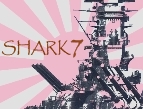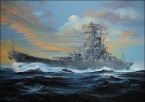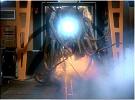n01487477
Posts: 4779
Joined: 2/21/2006
Status: offline

|
quote:
ORIGINAL: Shark7
quote:
ORIGINAL: n01487477
quote:
ORIGINAL: Historiker
quote:
ORIGINAL: Shark7
You can significantly shorten the game as Allies if you do this...in that some players will not continue if Palembang is completely destroyed. It is a very unfortunate thing that one base is the make or break of the entire game.
I sometimes think that the Palembang refineries and oil should have been split up and placed in several dot bases surrounding the actual base location. You know, something like you have an 'Palembang Oilfield North, Palembang Oilfield West, etc' just due to how much importance is placed on that 1 location.
The strategy listed here is perfectly viable, just realize that it could turn into a game-breaker in some circumstances.
And taking it too early as Japan leaves the refineries and oilfields open to destruction by Allied bomber raids.
Is it still possible to add a device several times to one base? I had seen (and experienced it) this problem in witp times. A simle workaround was to set 5 or more oilwells into one base, with the combined output of the single well that was in stock. In even of damage, one was able to repair x (= number of oilwells) times faster than in stock.
I've thought about this for my Options_88 mod. The mod is non-historical in terms of shipping and aircraft and yet I wanted to make it an economic mod that was harder - so I'm at a crossroads with no clear answers. Whether to keep it as is, cause it did take a long time for the Japanese to repair it historically or to double it or x? and make it easier to repair.
From what I recall...
1. The oilfields and refineries were barely damaged at all. The demolition charges failed in some cases, or the fields were taken very quickly in others.
2. The Japanese had specially trained oilfield engineer units that repaired the oilfields far faster than the Allies had predicted they could.
Let me preface this with 2 points
1. This is not a rebuttal of Shark7
2. I live in a korea and don't have the availability of books that others seem to have - my research here is therefore internet based and therefore maybe flawed. If any of you have other information or links to provide me - I'd be appreciative.
Let's look at Shark7's points... I can't find much on the effectiveness of the demo charges, but basically it took a year to get back to pre-war production. Even with this level the Japanese found it hard to get it home and utilise it... Not sure how fast they predicted, but a year is a fair amount of time. The other solution in game other than splitting them (which I'm now stronger on), is to have them damaged which would nullify the damage effect of capture...
Anyway, here is some of the stuff I've found - it does amaze me however, how much the US war effort gave logistically on two fronts. Heady days.
Some Background ...
quote:
What was to become Indonesia's most important oil fields (Duri and Minas) in central Sumatr, were discovered just prior to World War II by Caltex (a joint venture between the American companies Chevron and Texaco). Production did not, however, figure in World war II. By the time of World War II, the annual output of 65 million barrels annually was more than enough to make Japan self-sufficent and fuel not only Japanese industry, but all of the increased demands that would be rquired for a naval war in the Pacfic. The DEI did not produce crude oil. The Dutch at a cost od 150 million gilders built a huge refinery at Balik Papan in eastern Borneo (1920s).
http://histclo.com/essay/war/ww2/stra/w2j-oil.html
quote:
...And Oil
Next, let's examine Japan's situation with respect to petroleum production at this stage in the war. In the fourth quarter of 1942, Japanese oil production (which was almost entirely concentrated in her conquered territories, such as the Indies) was 1,194,000 tons. Of that, only 643,000 tons made it to Japan (which is where practically all the refineries were), the rest being either lost to attack, or consumed in the conquered territories. So roughly 214,000 tons of oil per month was making it to Japan. However, the Imperial Navy alone was consuming about 305,000 tons of heavy oil (in the form of fuel oil) per month by this stage in the war (Parillo, p. 237). Keep that figure in mind: 305,000 tons.
...
Furthermore, by this time (October-November 1942) it must have been begining to become clear to the Japanese that the oilfields in Java and Sumatra were not going to be brought back into production at nearly the rate that pre-war estimates had counted on. The Dutch and their Allies had done a much more thorough job of demolition in the oilfields than the Japanese had hoped. This, coupled with the sinking of a transport filled with equipment and valuable refinery personnel, meant that Japanese efforts to get the production field back into production were doomed to be much slower than hoped by the Japanese military. The fact that the Imperial Navy had built up large stocks of petroleum before the was could not compensate for this sobering knowledge, especially given the high rate of fuel consumption thus far in the war. The week-long Battle of Midway alone had consumed more fuel than the Japanese Navy had ever used before in an entire year of peacetime operations (Willmott, "The Barrier and the Javelin").
http://www.combinedfleet.com/guadoil1.htm
This point is countered by ...
Shark7's Point2
quote:
The most important oil field was Palembang. Before the war, 8,000,000kl oil was produced in the NEI and more than half of it was produced in Palembang.
The Japanese GHG estimated that the production of oil would be 300,000kl in the first year after occupied the NEI and 1,000,000kl in the second year. However, the actual production in the first year was 5,000,000kl. It is because the damage of the oil fields was less than expected and 7,700 Japanese oil engineers worked hard to recover the oil production. In 1943, the oil production was recovered to the prewar level.
http://forum.axishistory.com/viewtopic.php?t=87104
And backed by ... (Ironically - going to war for Oil seems to have backfired...)
Japanese Oil Sources 1938-1945, barrels per day
Crude Refined Domestic Syntetics/ Total |DEI Crude Oil
Imports Imports Production Substitutes |Production
|
1938 50,422 38,477 6,753 912 96,564 |157,036
|
1939 51,625 32,378 6,389 2,011 92,403 |170,101
|
1940 60,411 41,398 5,652 3,984 111,445 |169,429
|
1941 8,576 14,361 5,318 5,159 33,414 |147,134
|
1942 22,318 6,515 4,630 7,345 40,808 | 65,753
|
1943 26,981 12,745 4,970 5,551 50,247 |132,312
|
1944 4,496 9,334 4,342 5,693 23,865 | 60,820
|
1945 0 0 4,432 4,874 9,306 | 20,822
(1st half)
http://forum.axishistory.com/viewtopic.php?t=87104#wrap
So, Shark7 made some good points and I just wanted to thank him for making me look harder... The following is related to other options I'm thinking about and wanted some feeback for my mod. Sorry to hijack the thread (BUT it seems to have already been...)
An interesting aside...post-war with Kurita
quote:
The old man and the oil
by Byron W. King
HE WAS A frail old fellow, dressed in loose-fitting clothes, working in his garden and chopping potatoes. Less than a year before, in 1945, he was in command of one of the largest fleets that had ever been assembled by any nation. His name was Takeo Kurita, vice admiral of the former Imperial Japanese Navy.
A young U.S. naval officer named Thomas Moorer and his translator approached Kurita. They explained to the admiral that they were working for a historical study group, gathering information about the war that had recently ended for Japan on such unfavorable terms. They asked Kurita if he would agree to discuss his experiences. And so began a series of interviews of the former Japanese military commander by representatives of the U.S. Strategic Bombing Survey, Naval Analysis Division.
"We Ran Out of Oil"
Kurita held nothing back. There were no state secrets any more. "What happened?" asked the American officer. "We ran out of oil," replied Kurita, matter-of-factly.
Again and again during the interviews with Moorer and others, Kurita referred to a lack of fuel as the key reason that the Japanese forces were ground down to memories and ghosts. Kurita reflected on why his fleet was all but annihilated at the Battle of Leyte Gulf in October 1944. Kurita explained that he brought his ships into that action without knowing whether there was sufficient fuel to bring them out of the zone of combat. Thus, Kurita's ships sailed slowly to their fate, conceding the element of surprise to the vigilant Americans, because the Japanese commanders were attempting to conserve enough fuel to return home. And so, lacking surprise, many of Kurita's ships never had the opportunity even to turn around before being sent to the bottom by U.S. submarines and air power, along a track of sorrow that covered several seas.
Kurita explained that during the Leyte Gulf battle, he deployed his ships on a dangerous night passage through the San Bernardino Strait. "I was low on fuel," he said. Kurita's fleet tankers had been sunk or dispersed. The only fuel available to the Japanese ships was whatever was in their own tanks. "Fuel was an important consideration, the basic one," said Kurita. There was not enough fuel for his ships to sail around the adjacent landmasses, so they were forced by necessity to transit the relatively narrow straits.
Several months after the Japanese disaster at Leyte Gulf, in February 1945, forces of the U.S. Navy and Marine Corps met with no naval resistance whatsoever during the invasion of Iwo Jima. The Japanese had simply conceded the sea and airspace around the island to the American attackers. The reason was that the Imperial Navy had elected to conserve fuel for the final defense of Japan.
By early 1945, almost all ships of the Japanese fleet had been deactivated. Powerful battleships, and even aircraft carriers, that had cost immense sums to construct before the war with the U.S. and during the early years of the conflict, were mere cold iron tied up to the pier for lack of fuel. Japan's basic military decision-making process was not how to defend against American attacks on many fronts. Japan's main effort was simply to struggle to preserve its dwindling levels of oil reserves.
Flying on Pine Needles
By mid-1944, Japan's economy and its military were being starved of energy supplies, the consequence of an ever-tightening noose applied by U.S. and Allied air and naval forces. U.S. submarines sank hundreds of Japanese ships in this time frame, including critically needed tankers full of oil. The American submarine campaign against Japanese sea power all but cut off the sea lines of communication between Japan and its so-called "southern resource area."
In desperation, Japanese war planners utilized every possible means to convert available resources into fuel substitutes. The Japanese manufactured alcohol from confiscated food supplies such as potatoes, sugar, and rice, thus forcing a direct competition between human stomachs and mechanical gas tanks. But alcohol has an energy content of about 65,000 Btu per gallon, whereas aviation gasoline delivers about 130,000 Btu per gallon. So on the best of days, Japanese aircraft took off with half the energy equivalent of their American counterparts in their fuel tanks. And aerial combat proved the disparity, with American aircraft utterly dominating the skies.
People in Japan were forced to tighten their belts even more when large amounts of garden vegetables began to be used for manufacturing lubricating oils. And even old rubber products such as tires and rain slickers were "distilled" to recover whatever oil could be had. But it was not enough.
By late 1944, the Japanese navy commenced a project to manufacture aviation fuel from pine tree roots. "Two hundred pine roots will keep an airplane in the sky for one hour," said a Navy spokesman. The Japanese navy distributed over 36,000 kettles and stills, in which countless pine tree roots met their fate. Many a hillside of Japan was utterly denuded of trees. But each kettle or still could produce only about 4 gallons of raw product, and even that required significant treatment to upgrade to anything approaching usable fuel. Compounding the problem, each still required its own fuel supply, and this exacerbated an already severe fuel shortage in Japan. By one estimate, 400,000 Japanese worked full-time in order to support a dispersed, inefficient industrial base that could produce all of about 2,500 barrels of pine oil per day. In the end, a mere 3,000 barrels of "pine root" aviation fuel were ultimately delivered to the Japanese navy. And the pine derivative gummed up aviation engines after just a few hours of use. The entire project was a massive waste.
The Way to Lose a War
Many years later, the American naval officer Thomas Moorer had retired as a four-star admiral and chairman of the U.S. Joint Chiefs of Staff. In an interview, the retired American Adm. Moorer reflected on the retired Japanese Adm. Kurita that he had met long before. "He had been in command of the entire fleet," recalled Moorer, "and now here he was digging potatoes."
"The lesson I learned," said Moorer, "was never lose a war." And the American admiral added, "The way to lose a war is to run out of oil"
Finally - I've been looking at a whatif based on Pearl losing most of its fuel...
quote:
The Japanese realized that oil was the bottleneck in their fighting strength; any lengthy delay in securing an oil source would be disastrous. (48) Indeed, it was stated at a conference in late October 1941 that Japan needed to occupy the oilfields in the southern areas by March. If this did not occur, adding in such factors as normal stockpile depletion and getting the oilfields back into production, the Japanese would run out of oil in about 18 months. (49) By September 1941, Japanese reserves had dropped to 50 million barrels, and their navy alone was burning 2,900 barrels of oil every hour. The Japanese had reached a crossroads. If they did nothing, they would be out of oil and options in less than 2 years, If they chose war, there was a good chance they could lose a protracted conflict. Given the possibility of success with the second option, versus none with the first option, the Japanese chose war. (50)
There are many critical points of this preconflict period. The Japanese realized the importance of oil to their modern military machine, and any operations undertaken in the vast Pacific theater would require large amounts of oil. They were willing to send a huge task force of irreplaceable ships thousands of miles into hostile waters (and all the attendant oil this operation would consume) to attack a formidable enemy fleet to help achieve oil self-sufficiency. (51) The concurrent plan to seize the US possessions in the Central Pacific would ensure the Japanese would control all the oil-producing regions between the west coast of the United States and the Persian Gulf. Finally, there is the planning of the Pearl Harbor raid; without oil tankers, it would have been impossible for the Japanese Navy to accomplish that mission. Armed with this knowledge, would the Japanese realize this same need for oil applied to the US Navy?
...
Like the Japanese, the Pacific Fleet had its own oil problems. The only major base for the US Navy in the Pacific was located in Hawaii. All major fleet logistics, repair, and storage were at the naval base at Pearl Harbor. The Navy also suffered from a severe shortage of oilers, which limited the operations radius of the fleet.
Nagumo did not realize the magnitude of his error in not completing the destruction of Pearl Harbor by attacking the base and fuel facilities. His pedantic and traditional view of naval strategy blinded him to the opportunity of a lifetime.
The Japanese knew all about those oil storage tanks. Their failure
to bomb the Fleet's oil supply reflected their preoccupation with
tactical rather than logistical targets.... Nagumo's mission was
to destroy Kimmel's ships and the airpower on Oahu.
http://findarticles.com/p/articles/mi_m0IBO/is_1_28/ai_n6172425/pg_4/?tag=content;col1
And also, changing the fuel requirements of merchants V warships
http://www.combinedfleet.com/guadoil1.htm
Other links...
http://digital.library.northwestern.edu/league/le0278ah.pdf
http://www.americanforeignrelations.com/O-W/Oil-Oil-and-world-power.html
Oil & War How the Deadly Struggle for Fuel in WWII Meant Victory or Defeat
Goralski, Robert & Russell W. Freeburg
There is an old saying, "Amateurs talk strategy, and professionals talk logistics." Commanders and their staffs must remember the importance of logistics to achieving the overall goal, for friendly forces as well as the enemy.
_____________________________
|
 Printable Version
Printable Version
























 New Messages
New Messages No New Messages
No New Messages Hot Topic w/ New Messages
Hot Topic w/ New Messages Hot Topic w/o New Messages
Hot Topic w/o New Messages Locked w/ New Messages
Locked w/ New Messages Locked w/o New Messages
Locked w/o New Messages Post New Thread
Post New Thread